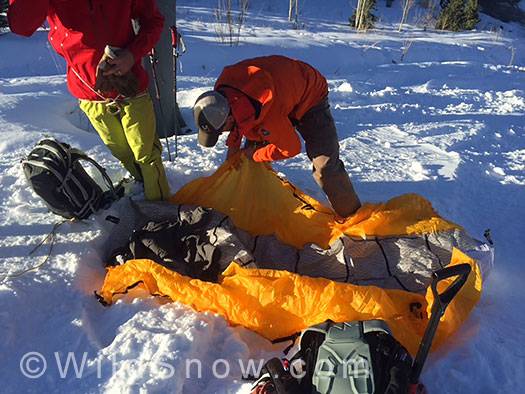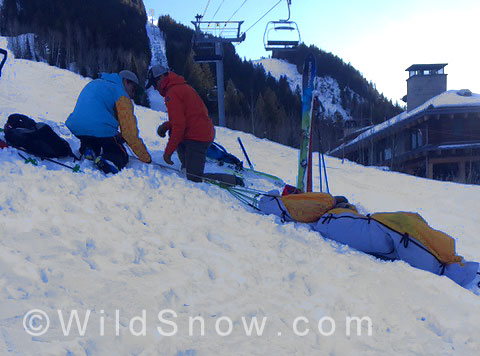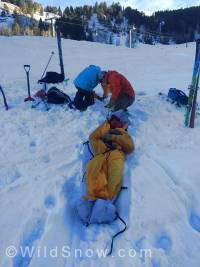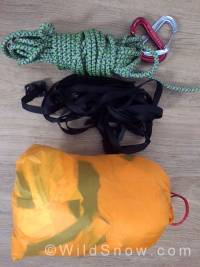Michael Arnold
The unexpected is waiting to happen. Each day we wake up to something new that shapes our stoke — or our fear. Being overly prepared isn’t the most efficient way to live in today’s society, but to one degree or another it is what we require to survive. Life in the mountains is not much different.
For backcountry ski touring, we carry the typical essentials for navigation, first aid, LNT, etc. Beacon, shovel, probe have been the basics for decades. Now enthusiasts add several items for safety. A backcountry kit can include an avalanche airbag pack, Avalung, satellite phone, and countless electronic items to bring back content for sharing information.
But what about shelter in the event of an accident? When that avalanche fractures across the slope and you get caught, luck and a balloon pack can help. You might survive but still break a leg or worse. What then?
Alpine Threadworks Rescue Tarp/Shelter can give you a higher chance of making it out of a bad situation.
Features:
After using it in the field, here’s my takeaway:

Use victim’s pack and extra gear to pad sled bottom for comfort. Recommendation for remote travel: bring a small ThermoRest. It adds a lot of comfort in a bivvy or long evacuation.

Lowering victim in the sled. Carry a 10m cord at 6mm in diameter for towing and hauling. Professionals would carry more hardware (carabiners, slings, etc.).
Available from Alpine Threadworks. Price $275.00, Canadian.
(WildSnow guest blogger Mike Arnold is an IFMGA mountain guide who is co-founder of Vetta Mountain Guides. When he’s not sleeping in his Sprinter van or some hut above Chamonix, he lives in the Roaring Fork Valley of Colorado.)
Beyond our regular guest bloggers who have their own profiles, some of our one-timers end up being categorized under this generic profile. Once they do a few posts, we build a category. In any case, we sure appreciate ALL the WildSnow guest bloggers!


